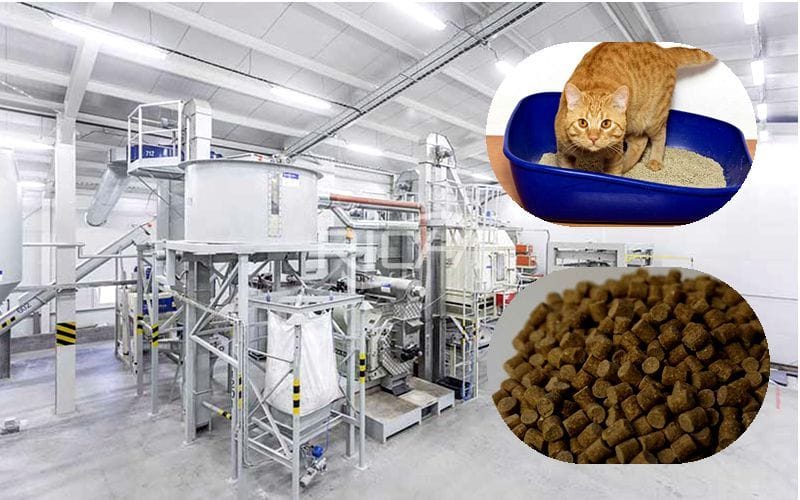
Cat litter is a must-have for cat owners, but few consider the detailed production process that goes into each bag. At a cat litter factory, every step is carefully designed to create a product that’s safe, effective, and easy to use. Here’s a behind-the-scenes look at a day in the life of a cat litter factory and the science behind every scoop.
Step 1: Sourcing High-Quality Materials
The production process begins with selecting the right materials, typically bentonite clay or silica. Bentonite clay is the top choice for clumping litters due to its strong absorbency and clumping properties, while silica gel crystals are known for their superior odor control. Sustainable alternatives, like recycled paper or plant-based fibers, are also gaining popularity. Each material is chosen with the goal of creating a product that is not only effective but also eco-friendly.
Step 2: Crushing and Grinding
After the raw materials arrive at the factory, they are crushed and ground to the appropriate particle size. This step is essential because it determines how well the litter absorbs moisture and clumps. Factories use advanced equipment to control the particle size and consistency, ensuring each bag of litter is easy to pour, scoop, and manage.
Step 3: Dust Control Measures
Dust reduction is one of the main concerns in litter production, as dust can be an irritant for both cats and owners. The ground material goes through dust-removal systems that filter out fine particles, leaving only the granules. Factories use high-tech extraction and filtration systems to produce dust-free or low-dust litter, making it safer and more comfortable for cats and households.
Step 4: Adding Clumping and Odor-Control Agents
To enhance the performance of the litter, factories add specific agents to improve clumping and control odor. Clumping litters are formulated with binders that cause the litter to form tight clumps when wet, making it easy to scoop. For odor control, additives like baking soda, activated charcoal, or natural deodorizers are mixed in, helping neutralize unpleasant smells and keeping the litter box fresh.
Step 5: Rigorous Quality Testing
Quality control is an integral part of the process to ensure that every batch of litter meets high standards. Factories test the litter’s clumping ability, absorbency, dust levels, and odor control. Some companies even test the litter with cats to assess its comfort and usability. This level of testing ensures that the litter is consistent and reliable for every use.
Step 6: Packaging with Precision
After passing quality checks, the litter is packaged in bags or boxes of various sizes to suit the needs of different households. Many brands now offer resealable packaging, which helps keep the litter fresh and minimizes spills. Packaging design is also an important consideration, with features like handles or lightweight materials to make carrying and storing litter easier.
Step 7: Distribution to Retailers and Homes
Once packaged, the litter is distributed to retailers and online warehouses worldwide, ready to be shipped to homes. Cat litter is available in various types, from basic clumping formulas to dust-free or scented options, providing pet owners with plenty of choices to suit their preferences and their cat’s needs.cat litter factory
The Science Behind Every Scoop
Every bag of cat litter represents a carefully crafted product, designed to provide a cleaner and more pleasant experience for both cats and owners. From sourcing high-quality materials to grinding, dust control, testing, and packaging, each step is essential in delivering a trusted product. The next time you scoop the litter box, you can appreciate the science and precision behind every scoop—designed to make pet care a little bit easier and your home a lot cleaner.